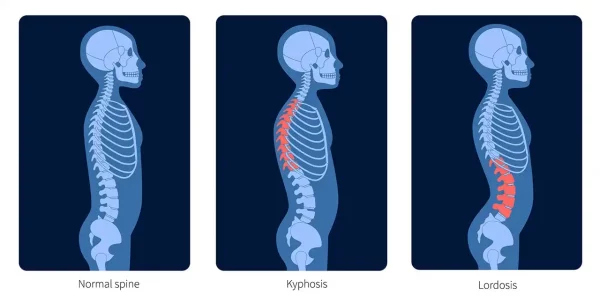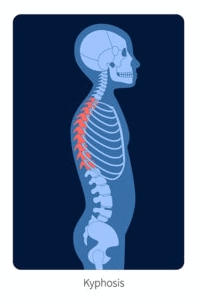What Causes Straightening of the Cervical Lordosis?
- What is straightening of the cervical lordosis?
- Why is it a problem?
- How does it happen?
- Recent research
- Treatment options
What Is Straightening of the Cervical Lordosis?
If you read a handful of neck X-ray reports, you’ll likely see that the radiologist has said on a few that there is “straightening of the normal cervical lordosis.” To understand what this is, you have to understand how the spine is constructed.
When the normal curve is lost, there are a number of terms used to describe it by the radiologist:
- Straightening of the normal cervical lordosis
- Loss of cervical lordosis
- Straightening of the cervical lordosis
Your neck, upper back, and low back all have counterbalanced curves. One goes one way, and the adjoining curve goes the opposite way. When the curve points toward the front, it’s called lordosis. When it points toward the back, it’s called kyphosis. These curves balance the force of the head and allow you to stand with minimal muscle energy. They also equally distribute the forces between the front of an individual vertebra, where the disc is located, and the back of the verterbra, where the facet joints live.

Pikovit/Shutterstock
Why Is Straightening of the Cervical Lordosis a Problem?
When you lose the normal neck curve, the weight of the head is no longer balanced by the opposing curve (kyphosis) in the upper back. This causes muscle power to be needed to keep the head upright.

Pikovit/Shutterstock
The picture above shows the head being held up by the muscles at the back of the neck. This leads to overload where those muscles attach to the skull, causing headache pain. This also causes more weight to be transferred to the discs between the vertebrae, which can lead to more wear-and-tear disc degeneration.
How Does Straightening of the Cervical Lordosis Happen?
One of the more common causes of straightening of the normal cervical lordosis are car accidents in which the neck ligaments are damaged. Other causes are more insidious, like looking down all the time to interact with a cell phone, tightness in the chest wall, tightness in the psoas muscle from sitting too much, or just getting older.
Recent Research on Straightening of the Cervical Lordosis
While we’ve known that straightening of the neck curve was bad news, a recent study just upped the ante of bad stuff that happens when you have this problem (1). This research looked at 30 patients with loss of cervical lordosis and 30 matched controls without loss of cervical lordosis. Doppler ultrasound was used to measure the blood flow through each subject’s vertebral artery.
This important blood vessel courses through holes in the neck bones, so it could be vulnerable if the relationships between the neck bones change. In the patients with loss of the normal neck curve, the diameter of the artery was small, with less blood flowing through it. Given that this is one of the major sources of blood flow to the brain, this could be a huge future problem for teenagers who have been glued to their phones since childhood.
Treatment Options
_____________________________________________
References
(1) Bulut MD, Alpayci M, Şenköy E, et al. Decreased Vertebral Artery Hemodynamics in Patients with Loss of Cervical Lordosis. Med Sci Monit. 2016;22:495-500. Published 2016 Feb 15. doi:10.12659/msm.897500

If you have questions or comments about this blog post, please email us at [email protected]
NOTE: This blog post provides general information to help the reader better understand regenerative medicine, musculoskeletal health, and related subjects. All content provided in this blog, website, or any linked materials, including text, graphics, images, patient profiles, outcomes, and information, are not intended and should not be considered or used as a substitute for medical advice, diagnosis, or treatment. Please always consult with a professional and certified healthcare provider to discuss if a treatment is right for you.
